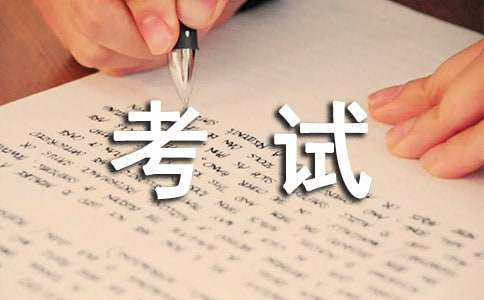- 相關推薦
翻譯資格考試高級口譯練習題
考生在備考時,要明確備考方向和重點。下面是YJBYS小編為大家搜索整理的關于翻譯資格考試高級口譯練習題,歡迎參考學習,希望對大家有所幫助!想了解更多相關信息請持續關注我們應屆畢業生培訓網!

In Idaho's Snake River Valley, where potato farmers depend on electric pumps to water their crops, the state's largest power company hopes to stand tradition on its head and profit by selling farmers less, not more, electricity. To do that, Idaho Power is vastly expanding its energy-efficiency programs for 395,000 residential customers, small businesses, and farmers. Usually the more customers save, the less utilities make. But under an innovative deal with state regulators in March, Idaho Power gets paid for its plants and equipment and boosts profits by winning incentive payments for reducing electric demand.
It's an idea that appears to be catching on as legislatures fret about global warming and utilities scramble to meet rising demand without the increasing harassment and cost of building new power plants. Idaho is among 13 states whose regulators have either adopted or proposed measures in the past year to decouple utility profit from electricity production. Decoupling is advancing even faster for natural-gas utilities, with 25 states either adopting or proposing decoupling plans in recent years. "This wave toward 'decoupling' is clearly gathering momentum," says Martin Kushler of the American Council for an Energy-Efficient Economy in Washington. "More states seem to be calling every week to find out about this."
Although California pioneered the idea 25 years ago—and strengthened incentives and penalties last month—interest is picking up again because of global warming, experts say. The main idea is that by rearranging the incentive structure, regulators can give utilities clear incentives to push energy efficiency and conservation without hurting their bottom lines. Under the new rules in California, for example, electric utilities could make as much as $150 million extra if they can persuade Californians to save some $2 billion worth of power, according to the Natural Resources Defense Council.
"This is a vital step in the global-warming fight," says Audrey Chang, an NRDC researcher. "It represents, we hope, a historic shift toward decoupling that is going to help bend the energy demand curve downwards." Beside Idaho, states that this year adopted decoupling for some or all of its electric power industry include New York, Connecticut, and Vermont. At least nine other states have seen major decoupling proposals this year.
Idaho Power is happy that its key fixed costs—plants and equipment—are now separated from variable costs of electricity sales such as fuel. Regulators annually readjust those fixed rates—up or down—a maximum of 3 percent to ensure that the company gets no more or less than it has been regulated to receive. But customers should benefit, too, as utility efficiency programs cut energy use and energy bills—something the company is trying hard to do so it can win a bonus if it meets or exceeds energy-cutting goals. "Before there was almost a disincentive to go hard at efficiency because we weren't recovering our fixed costs," says Mike Youngblood, an analyst for Idaho Power. "Now the anticipation is that we will recover our fixed cost, no more or less. And our customers will see their bill go down if they invest in energy efficiency."
One key reason utilities are often willing to decouple or even leading proponents of the proposals is because the costs of building a power plant has risen dramatically. A 500-megawatt coal-fired plant that cost $1 billion just a few years ago might cost $1.5 billion today, industry experts say. Add to that growing uncertainty about future costs. Global-warming legislation could put a price of $30 per ton on carbon-dioxide emissions from power plants. That could make coal, the cheapest power today, more costly. Another factor is the rising community opposition to coal-fired power plant construction.
In North Carolina, where regulators recently refused a Duke Energy Corp. proposal to build a power plant, the company has instead put forward a controversial decoupling proposal. The plan would pay the company to meet efficiency standards, although consumer advocates and even environmental groups question whether it's a good deal for ratepayers. In fact, some consumer advocates have major reservations about decoupling overall. "Unfortunately, we're seeing utilities trying to use decoupling as a blank check," says Charles Acquard, executive director of the National Association of State Utility Consumer Advocates in Silver Spring, Md. "We're not absolutely opposed to decoupling. It's how you do it that's critical."
1. What is the main idea of the passage?
(A) Electric utilities lose more profits from reducing electric demand.
(B) Electric utilities gain more profits from increasing electric demand.
(C) The more electricity customers save, the less profits utilities make.
(D) The more electricity customers save, the more incentive payments utilities get.
2. Which of the following gives the best definition of the expression "to stand tradition on its head" (para. 1)?
(A) To criticize tradition. (B) To go against tradition.
(C) To carry forward tradition. (D) To integrate tradition.
3. In the passage, the measures of decoupling used in utility efficiency programs refer to the practice of ________.
(A) separating the utility profits from power production
(B) combining fixed costs with variable costs
(C) strengthening both incentives and penalties
(D) rearranging the incentive structure
4. According to the passage, when Idaho Power is building plants and purchasing equipment, such fixed costs _______.
(A) will no longer be treated as the costs of electricity sales
(B) will partially be covered by state regulators
(C) are still to be recovered by the companies
(D) are paid from customers' electricity bills
5. All of the following are the reasons why electric utilities welcome decoupling EXCEPT ______.
(A) the rapidly rising cost of building power plants
(B) the uncertainty about future costs
(C) the community opposition to the building of coal-fired power plants
(D) the reservations consumer advocates have about energy-saving measures
參考答案:
1. D 2. C3. D 4. C 5. D
【翻譯資格考試高級口譯練習題】相關文章:
高級口譯翻譯資格考試全真預測02-26
高級口譯翻譯資格考試全真預測題02-26
2017翻譯資格考試初級口譯練習題及答案03-22
翻譯資格考試口譯詞匯(經典)02-26
翻譯資格考試中級口譯試題02-26
翻譯資格考試口譯模擬試題02-26
翻譯資格考試口譯文章精選01-22
翻譯資格考試高級筆譯閱讀理解練習題02-26
翻譯資格考試口譯模擬題02-26